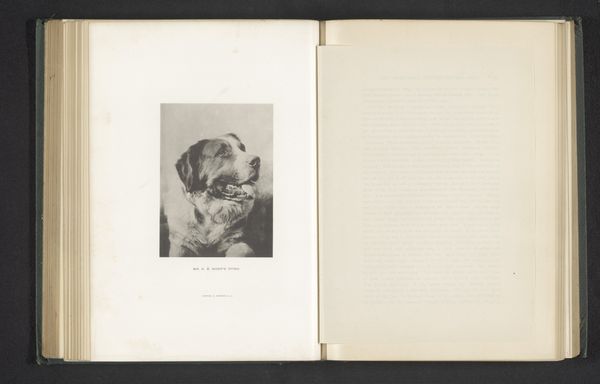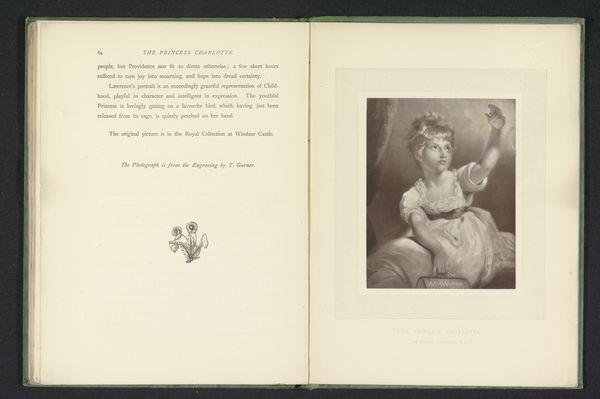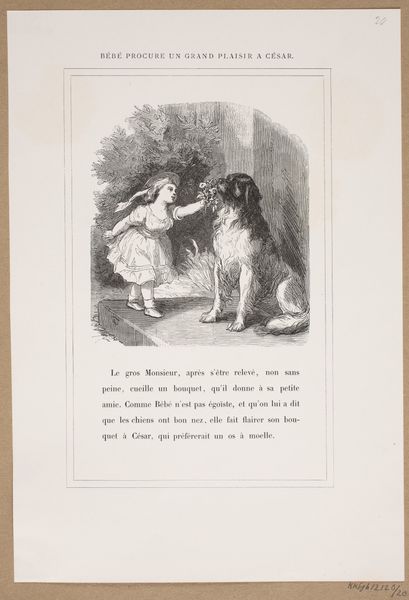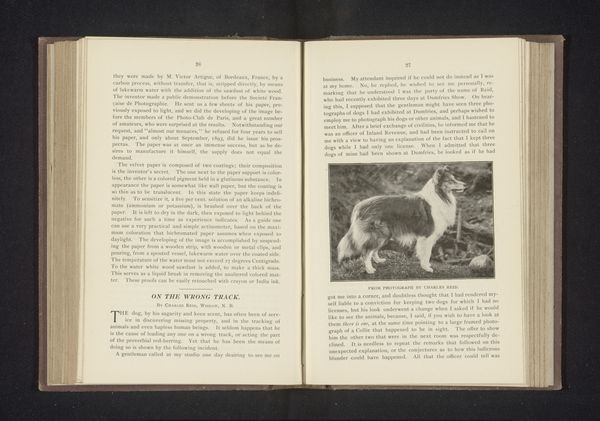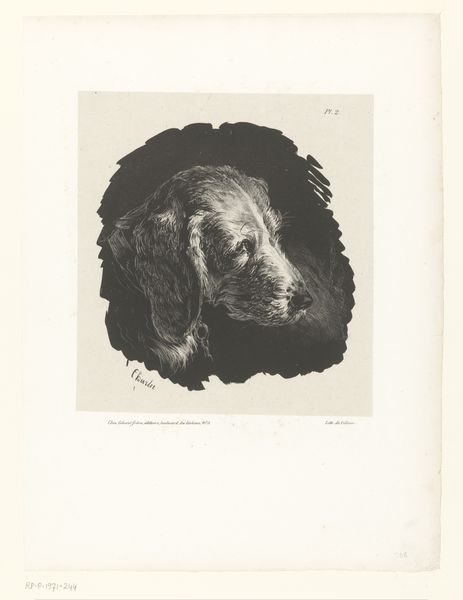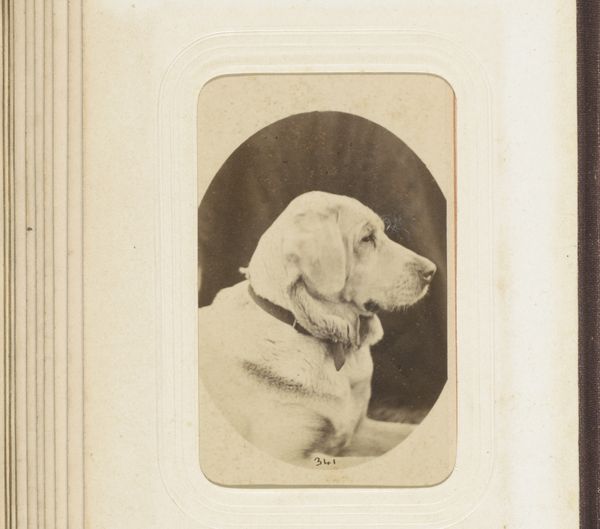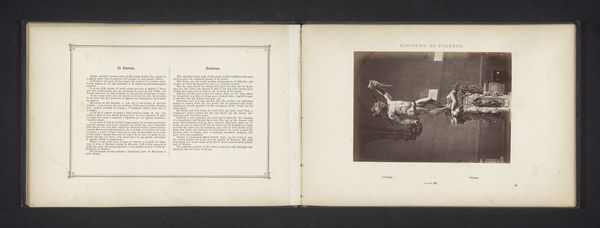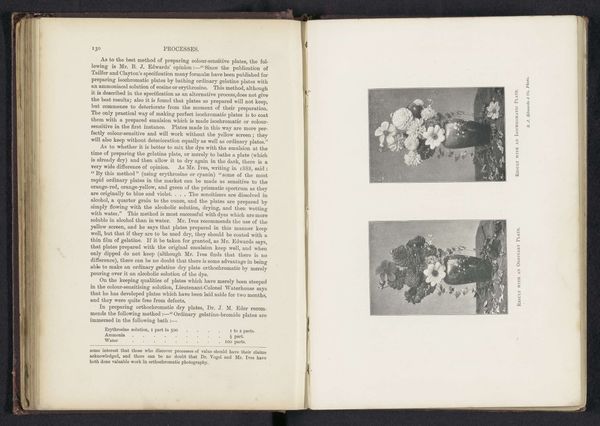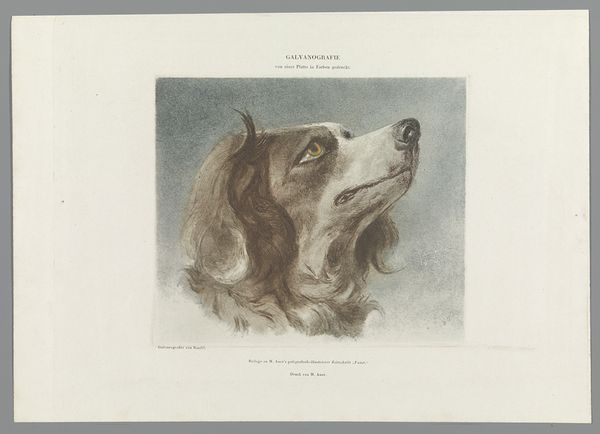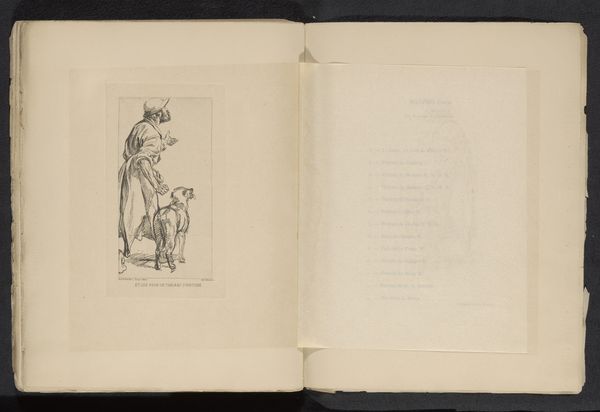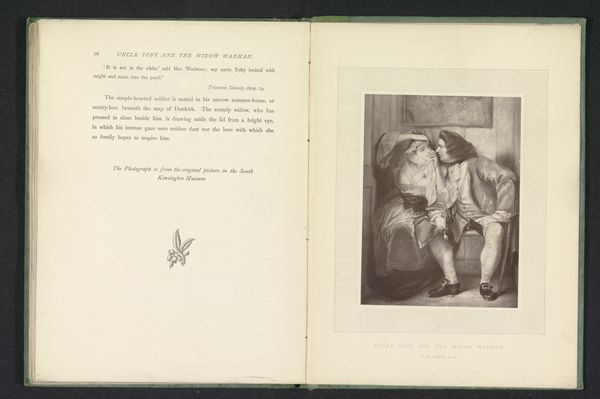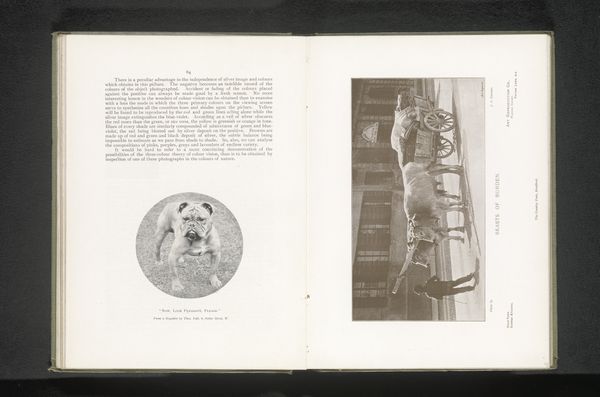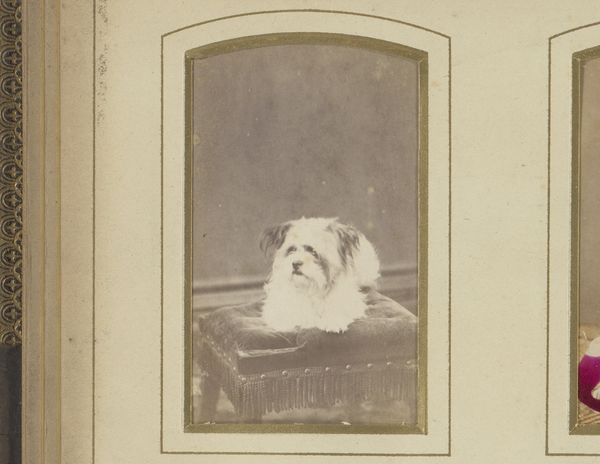
Fotoreproductie van een prent naar een schilderij van twee honden door Edwin Henry Landseer before 1873
0:00
0:00
Dimensions: height 149 mm, width 120 mm
Copyright: Rijks Museum: Open Domain
This photogravure reproduces an engraving after a painting by Edwin Landseer, a popular Victorian artist known for his sentimental animal subjects. The original engraving would have been made by meticulously incising an image into a metal plate, a laborious task requiring immense skill. Photogravure, developed in the 19th century, allowed for the mass reproduction of such images. The process involved transferring a photographic image onto a prepared copper plate, which was then etched and printed. This technique democratized art, making it accessible to a wider audience through affordable reproductions in books and magazines. Consider the social implications of this shift. While Landseer's original paintings were luxury items for the wealthy, photogravure enabled the middle class to enjoy art in their homes. The subtle tonal gradations achieved through this process captured the charm of Landseer's work, contributing to its widespread appeal. By examining the materials and methods of reproduction, we gain insight into how art was disseminated and consumed in the Victorian era, blurring the lines between high art and popular culture.
Comments
No comments
Be the first to comment and join the conversation on the ultimate creative platform.
